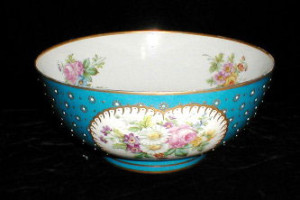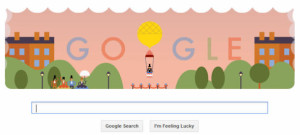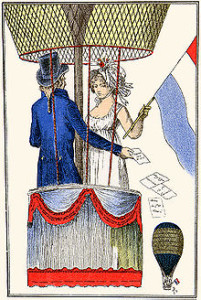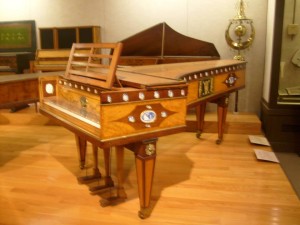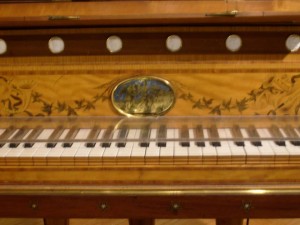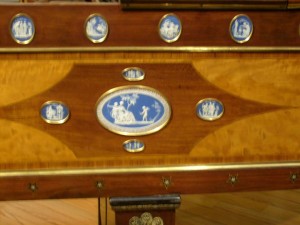Last week I talked about the Regency pianofortes I saw at the Museum of Fine Arts in Boston. Here are a few more intriguing items from their collection of musical instruments.
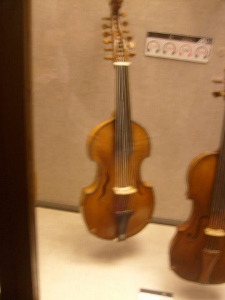 My daughters play violin, so they were wondering about this. It looks like a violin or viola but instead of the usual four strings, it has twelve! It turns out it’s a viola d’amore, which can have twelve or fourteen strings. The top set are played in similar fashion to a regular violin or viola; the lower set vibrates sympathetically.
My daughters play violin, so they were wondering about this. It looks like a violin or viola but instead of the usual four strings, it has twelve! It turns out it’s a viola d’amore, which can have twelve or fourteen strings. The top set are played in similar fashion to a regular violin or viola; the lower set vibrates sympathetically.
The viola d’amore was popular in the Baroque period. It probably wasn’t played much during the Regency, except perhaps at Concerts of Ancient Music put on by the London Concert Society (1776-1848).
Here’s the Vivaldi Concerto for viola d’amore and lute with soloists Enrico Onofri and Luca Pianca. The viola d’amore comes in at about 1:10. I love this performance!
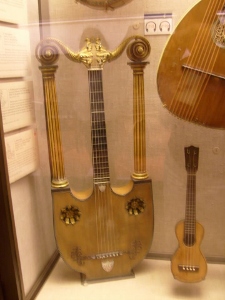 This beautiful instrument is a lyre guitar, circa 1810, clearly showing the classical influence popular during the Regency. The plaque dismissively calls it a “fad” but a Regency heroine could definitely have played one. In this video, John Doan provides a history of the instrument, illustrated with some period portraits. At around 2:50 you can hear him play.
This beautiful instrument is a lyre guitar, circa 1810, clearly showing the classical influence popular during the Regency. The plaque dismissively calls it a “fad” but a Regency heroine could definitely have played one. In this video, John Doan provides a history of the instrument, illustrated with some period portraits. At around 2:50 you can hear him play.
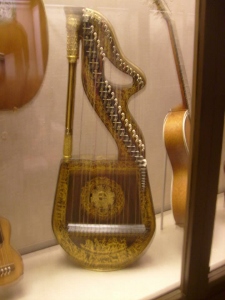 This instrument was labeled the dital harp, circa 1820. I’ve also seen it called a harp/lute. This is another instrument that could have been played by a Regency lady. I was able to find this charming video of Sarah Deere-Jones singing a popular Regency song, “The Last Rose of Summer”, in Regency garb, and accompanying herself with a Regency era harp/lute. Enjoy!
This instrument was labeled the dital harp, circa 1820. I’ve also seen it called a harp/lute. This is another instrument that could have been played by a Regency lady. I was able to find this charming video of Sarah Deere-Jones singing a popular Regency song, “The Last Rose of Summer”, in Regency garb, and accompanying herself with a Regency era harp/lute. Enjoy!
Did any of you know about these instruments before? Do you have any favorite unusual instruments?
Elena


